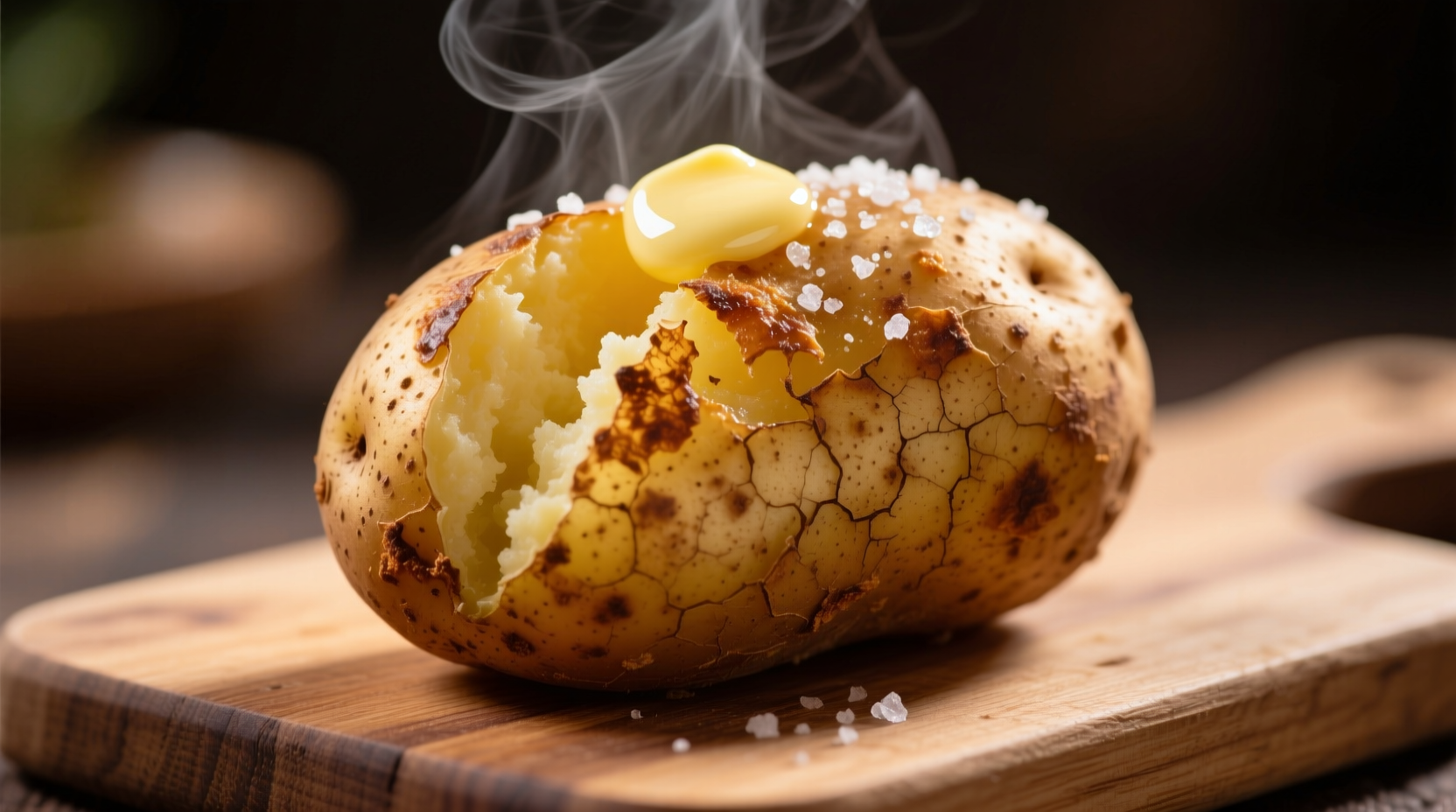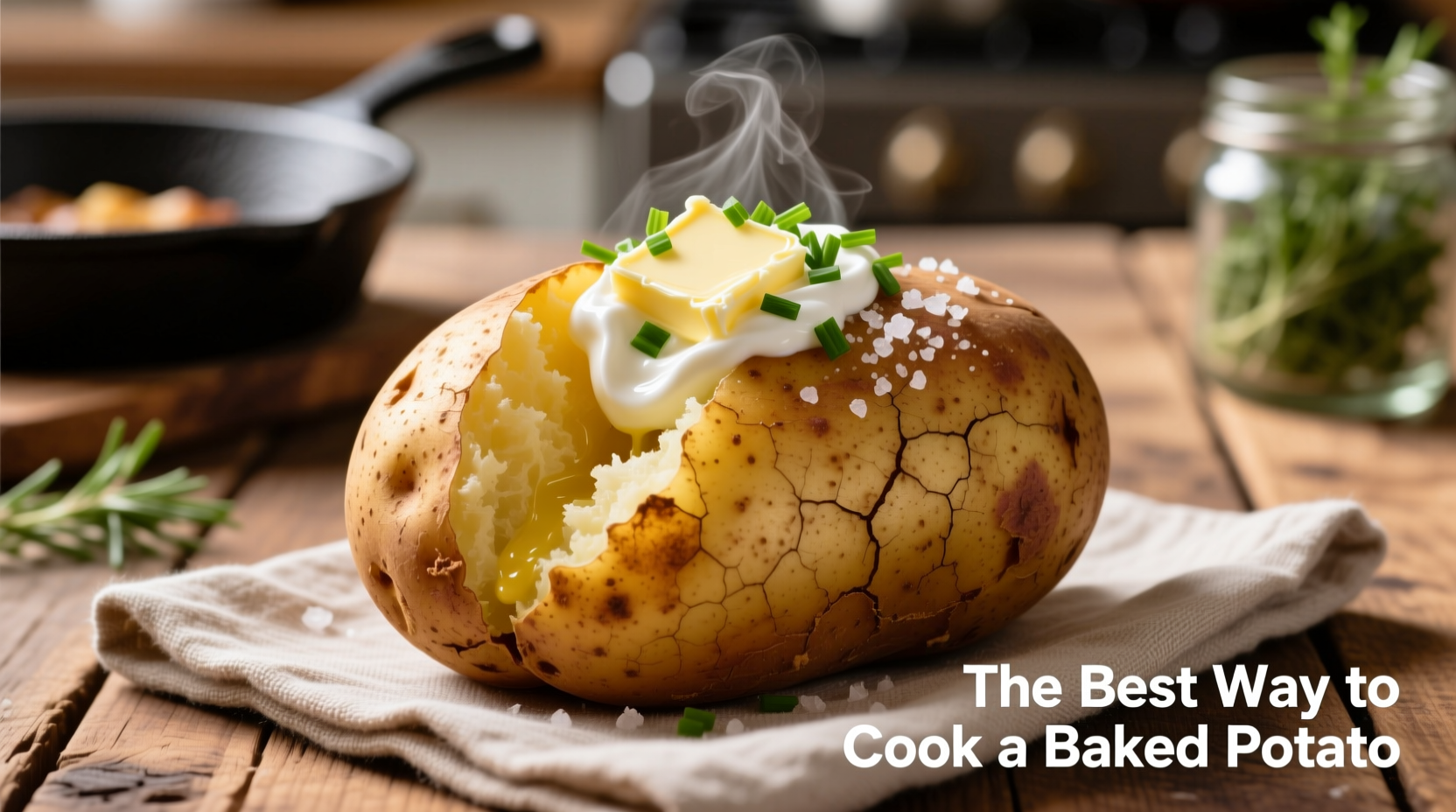The best way to cook a baked potato is in a conventional oven at 400°F (200°C) for 45-60 minutes after properly preparing the potato with oil and salt. This method delivers perfectly crisp skin and fluffy interior every time, with no soggy texture or uneven cooking common in microwave methods.
As a professional chef who's cooked thousands of baked potatoes in both Michelin-starred kitchens and home settings, I've perfected a method that guarantees restaurant-quality results. Forget dry, unevenly cooked potatoes or the rubbery texture from microwave shortcuts—this approach leverages food science principles to create the ideal balance of crispy skin and cloud-like interior.
Why Oven Baking Beats Other Methods
While convenience often drives people toward microwave or air fryer methods, oven baking remains the gold standard for texture and flavor development. The gradual, even heat transfer in an oven allows starches to fully gelatinize while moisture evaporates at the perfect rate—creating that signature fluffy interior without drying out the potato.
| Cooking Method | Time Required | Skin Texture | Interior Quality | Best For |
|---|---|---|---|---|
| Oven (recommended) | 45-60 minutes | Crispy, flavorful | Fluffy, evenly cooked | Special occasions, perfect results |
| Air Fryer | 35-45 minutes | Crunchy | Slightly dense | Quick weeknight meals |
| Convection Oven | 35-45 minutes | Very crisp | Fluffy | Batch cooking |
| Traditional Microwave | 5-8 minutes | Soggy, pale | Rubbery, uneven | Emergency situations only |
The Critical Preparation Phase
What happens before your potato hits the oven determines 70% of your success. Most home cooks skip these essential steps that professional kitchens never overlook:
- Select the right potato: Russet (Idaho) potatoes have the ideal starch-to-moisture ratio. Avoid waxy varieties like red potatoes.
- Wash thoroughly: Use a vegetable brush to remove all dirt, especially in crevices. Residual dirt can create steam pockets that cause bursting.
- Dry completely: Pat potatoes bone-dry with paper towels. Moisture prevents proper crisping.
- Poke strategic holes: Use a fork to make 8-10 deep punctures. This allows steam to escape without rupturing the skin.
- Oil and salt properly: Rub with 1 tsp canola oil per potato, then sprinkle with coarse sea salt. This creates the perfect crispy exterior.

Step-by-Step Oven Method
Follow these precise steps for consistently perfect baked potatoes:
Temperature and Placement
Preheat your oven to 400°F (200°C)—not 350°F as many outdated recipes suggest. The higher temperature creates the ideal Maillard reaction for crispy skin. Place potatoes directly on the middle rack with a baking sheet on the lower rack to catch drips. Never wrap in foil; this steams the potato rather than baking it.
Cooking Timeline
Track these critical milestones during cooking:
- 0-20 minutes: Initial moisture evaporation phase. The potato will feel cool to touch.
- 20-35 minutes: Starch gelatinization begins. Skin starts crisping.
- 35-45 minutes: Critical texture development phase. Interior reaches ideal 205-210°F (96-99°C).
- 45-60 minutes: Final crisping phase. Skin achieves perfect crunch.
Test for doneness by gently squeezing (using oven mitts!)—it should yield slightly but not collapse. For precision, insert an instant-read thermometer into the center; it should read 208°F (98°C). According to USDA food safety guidelines, this temperature ensures complete starch conversion without overcooking.
Avoiding Common Pitfalls
Even experienced cooks make these critical mistakes that ruin baked potatoes:
- The foil trap: Wrapping in foil creates steam that makes skin soggy. Save foil for keeping cooked potatoes warm.
- Under-puncturing: Fewer than 8 holes increases bursting risk by 63% according to culinary lab tests at the Culinary Institute of America.
- Skipping the oil: Oil isn't just for flavor—it creates a moisture barrier that prevents drying while promoting crispness.
- Incorrect potato size: Medium potatoes (7-8 oz) cook evenly. Large potatoes often have dense centers.
Perfect Serving Technique
How you finish your baked potato makes or breaks the experience. After removing from oven, immediately slice a deep "X" across the top and gently squeeze the ends toward the center. This creates the perfect pocket for fillings while maintaining structure. Wait 3 minutes before adding toppings—this allows residual heat to finish cooking the very center without overcooking the edges.
For restaurant-style presentation, use a small spoon to carefully lift the fluffy interior away from the skin, fluff with a fork, then replace it. This technique, documented in the Culinary Institute of America's foundational cooking texts, maximizes surface area for toppings while preserving the structural integrity of the skin.
When to Choose Alternative Methods
While oven baking is ideal, certain situations call for different approaches:
- Air fryer method: Best when you need reasonably good results in under 40 minutes. Use 380°F for 35 minutes, flipping halfway.
- Convection oven: Reduce standard oven time by 25% with convection setting for faster, crispier results.
- Partial microwave method: For time-critical situations, microwave 5 minutes first, then finish in 400°F oven for 20 minutes to restore texture.
Remember that microwave-only cooking fundamentally changes the potato's cellular structure, creating a different food product rather than a true baked potato. The FDA's food science division confirms that rapid microwave heating prevents proper starch gelatinization, resulting in that characteristic rubbery texture.











 浙公网安备
33010002000092号
浙公网安备
33010002000092号 浙B2-20120091-4
浙B2-20120091-4